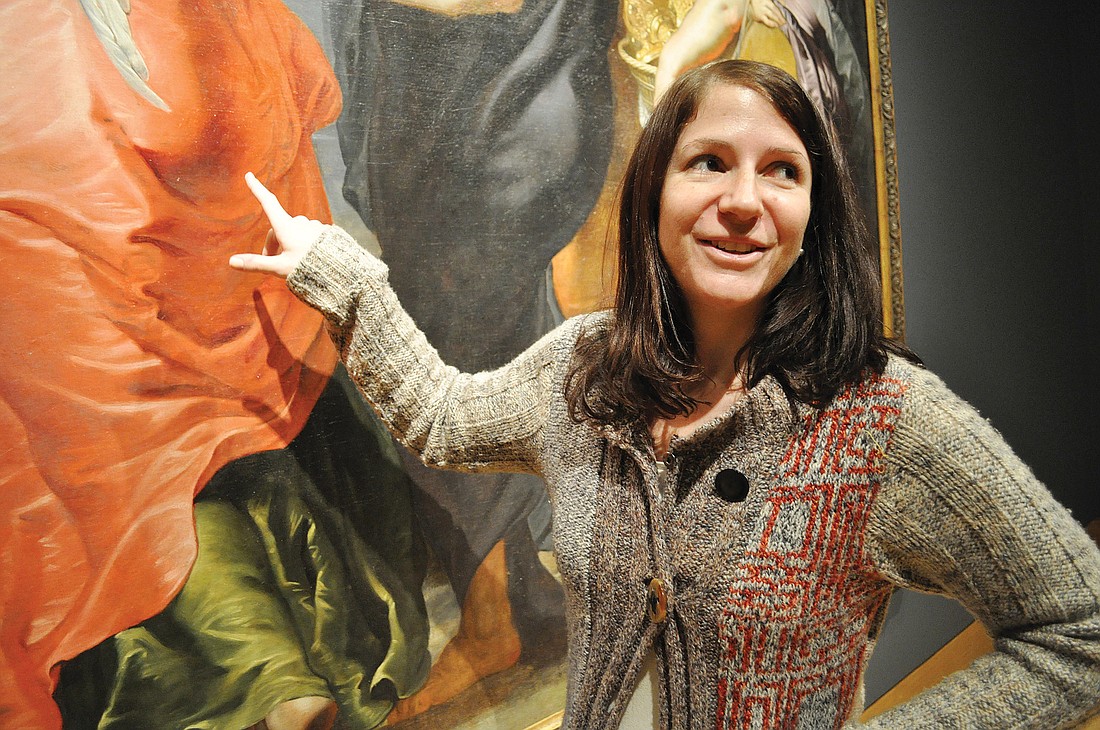- July 26, 2024
-
-
Loading

Loading

Virginia Brilliant’s name suits her. She must hear it all the time.
She’s got a Ph.D. in art history from the University of London’s Courtauld Institute of Art in the field of late-medieval early Renaissance Italian art.
At 32, she’s already published numerous scholarly articles and written several art history texts and exhibition catalogues.
A native of St. Louis, she was educated at a Swiss boarding school and speaks French, Italian and German, although she claims her German could use some work.
As a child she recalls touring art museums, where even then she marveled at technique, brushwork and how things could feel more authentic in a painting than they were in real life.
Take, for instance, Edgar Degas’ famous ballerinas.
Like many little girls, Brilliant took ballet lessons. The first time she really studied one of Degas’ ballerinas, she remembers noticing that some of the dancers’ kneecaps didn’t make anatomical sense.
“On one hand, it looked absolutely real,” she says. “On the other hand, there was this disjunction between reality and art. Sometimes it’s the artifice that makes something more real.”
Brilliant arrived at the John and Mable Ringling Museum of Art four years ago, having just come off a post-doctoral fellowship at the Cleveland Museum of Art and a graduate internship at the J. Paul Getty Museum.
At an art museum such as the Ringling, where the galleries are home to hundreds of paintings by old masters, Brilliant’s title sounds especially impressive: associate curator of European art.
When you factor in the vast collection of major works by Flemish painter Peter Paul Rubens, Brilliant’s job suddenly seems, frankly, overwhelming.
“His work has intimidated many curators throughout history,” Brilliant says. “When I got here, it was immediately apparent that if you’re going to be the curator of European art at this museum, you have to tackle Rubens.”
Her first major Rubens show proved a lot less daunting than she had imagined.
In fact, she says it fell into her lap.
At the suggestion of the Royal Museum of Fine Arts in Antwerp, Belgium, Brilliant curated “Peter Paul Rubens: Impressions of a Master Exhibition,” a collection of paintings and prints, half of which belong to the museum’s permanent collection and the other half of which is on loan from Antwerp.
The exhibition marks the first international collaboration between the Ringling Museum and Rubens’ hometown of Antwerp.
For the average person who might only identify Rubens as a painter of curvaceous women, the show is meant to shed light on the artist’s other work: his meticulous prints, which he began making as a way to discourage other artists from producing knockoffs of his work.
Brilliant had admired the prints for years, but it wasn’t until she started unpacking them from crates that she truly appreciated the artist’s dedication to detail.
“I felt like a kid on Christmas morning opening those crates,” Brilliant says. “The work is so crisp and clear. It looks like it was made yesterday.”
She’s right.
For work dating back to the 1600s, the prints look startlingly fresh. To begin with, the images are loaded with allegorical and mythological symbols, as well as the artist’s trademark sensual figures.
“You’ve heard of the term ‘Rubenesque,’” says Brilliant, pointing to an image of a full-figured nude. “The naked ladies are still here.”
What’s surprising is how three-dimensional the prints look.
At a time when Hollywood can’t seem to get enough of 3D animation, Rubens reminds us that the device has been around for 400 years.
“Trompe l’oeil,” Brilliant says. “A trick of the eye.”
She’s doing exactly what she’s always wanted to do for a living: talk at great lengths about art.
“I love objects,” she says. “It’s why I became a curator. You can look at slides of Rubens’ work all day, but nothing compares to the actual object. There are so many stories that can be spun from it.”
Like what?
“Well, there’s the story about the person who made the art. The story about the person who had it made. The story about the people pictured in it. The story about the person who collected it … ”
She trails off in thought, oblivious to the fact that she left out one key figure: the story about the person who curates the art.
IF YOU GO
“Peter Paul Rubens: Impressions of a Master Exhibition” includes more than 100 of the artist’s paintings and prints. The exhibition is up now through June 3 at the John and Mable Ringling Museum of Art. For more information, call 359-5700 or visit ringling.org.